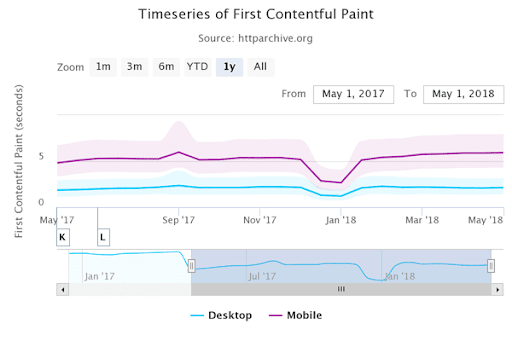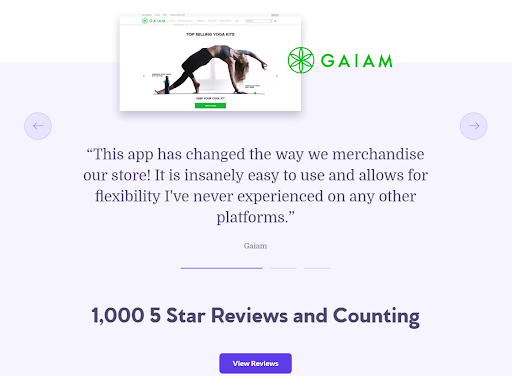E-commerce landing pages have a sort of Red Queen effect: they have to keep evolving just to keep up in the ever-changing online landscape.
While there are elements that always have been and always will be important (eg. H1 headers with keywords, eye-catching imagery, bold call-to-action), there are other features of modern landing pages that can quickly increase your conversion rate.
Global growth of retail e-commerce sales is above 20% year-over-year, with 2019 expected to top nearly $3.5 billion. As competition heats up, you’ll need every edge you can get to squeeze out more sales. With traffic being split between more players, a great way to acheive higher sales is to increase the conversion rate of your landing page. Let’s look at five ways to boost your landing page conversions this year.
1. Design landing pages for mobile traffic
Everyone in the industry has been beating this drum for so long, and most business owners understand the importance of a mobile-friendly site. But knowledge doesn’t always translate into action. In fact, websites may be going backwards in usability.
According to Search Engine Journal, the average page load speed on mobile actually went up from 2017 to 2018, by a whopping 20.7%. Why? In short, due to all the bells and whistles businesses are adding to their design. There’s more CSS load, more HTML load, images are larger, etc. All this adds up to having to wait nearly 6 seconds to use a single web page.

As more people reach for their phones to do preliminary and secondary research into the goods and services they’re thinking of buying, waiting 6 seconds for each page to load is inevitably going to turn people off. It’s not good enough to just pick a “responsive” theme that scales your site to mobile screens; you have to make sure that your pages are actually mobile-optimized to deliver a winning performance for the average user with a generation old $150 android device.
Design your mobile landing pages to be light and agile, and make sure to run them through Google’s PageSpeed Insights to see what can be tweaked to make them even faster.
2. Personalize landing pages for specific channels

A one-size-fits-all landing page just won’t cut it in today’s diverse marketplace. With traffic coming from social media (and all its types), Google search, referrals, mobile ads, you name it; the landing page message that speaks directly to the arriving customer has a much higher chance of converting.
According to Intercom, a more personalized marketing funnel resulting in an over 3x increase in new signup conversions. So while taking the time to create dynamic and plentiful landing pages can be a hassle for your business, the results are most definitely worth your effort.
Keep in mind, you don’t have to build a thousand out overnight. Take a deep dive into your audience data and see what the major traffic sources are, and the demographics from those traffic sources. For example, perhaps a full 25% of your traffic comes from Instagram and is comprised of mostly 18-25 year old women.
This should give you a starting point to create a personalized landing page for this channel. What image would resonate with them? What message? If you can show only three features to them, what would they be?
Keep A/B testing and keep building out more personalized pages until you’ve covered the majority of your traffic sources and audience.
3. Displays “trust signals” on your landing page

We’re in the age of Influencers: people who can move the market with a single recommended tweet. One in three trust an Influencer over a brand. Ever wonder why this works?
Today’s young consumers find much more authenticity in “real people” than in corporations and brands. Not only do they trust the reviews of the people they follow on social media, they usually limit their purchases to items that they can find reviews on, by average people, online. In short, they don’t buy Coke because Coke tells them to; they buy Coke if it has a 4.5 star average on Yelp.
This is why having customer reviews, ratings, quotes, and other “trust signals” are so important to earn more conversions on your landing pages. For example, Shogun’s home page (which also serves as one of our landing pages) includes a slider of customer quotes as well as a general tally of the 5-star reviews we’ve earned across the app stores:

Announcing that “yes, many others have vetted this company so you can rest easy knowing that it’s a tried and tested product,” is a confidence boost to potential customers and lead to higher conversions rates across the board.
For your landing pages, put your trust signals in a prominent place to ensure that every set of eyes than scan the page can’t miss them. In today’s competitive atmosphere, the more and better trust signals you can place, the more likely you will convert visitors into paying customers.
Looking to build better landing pages without the hassle? We’re here to help. Visit Shogun today and get started for just $19/month.
Robert Woo is a marketing writer for Shogun.


